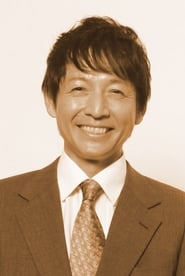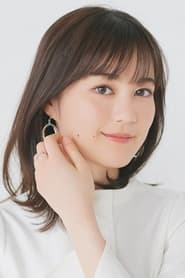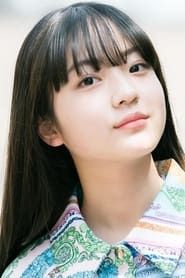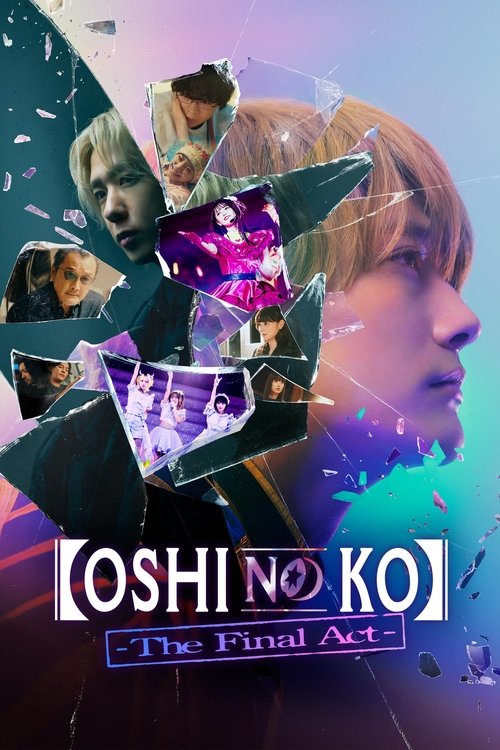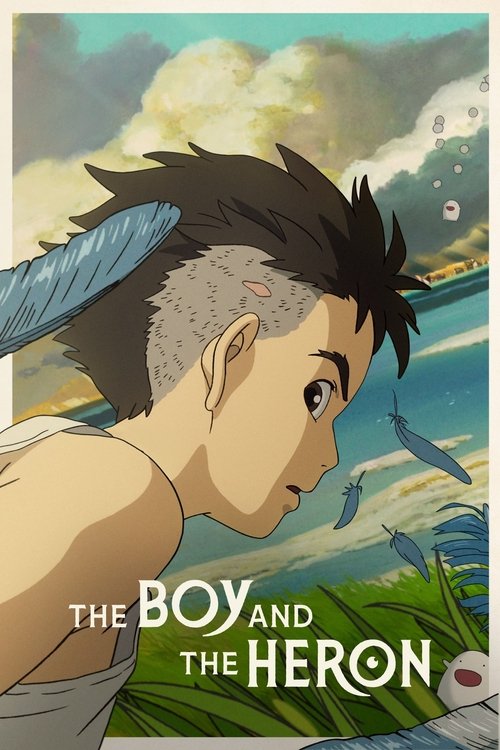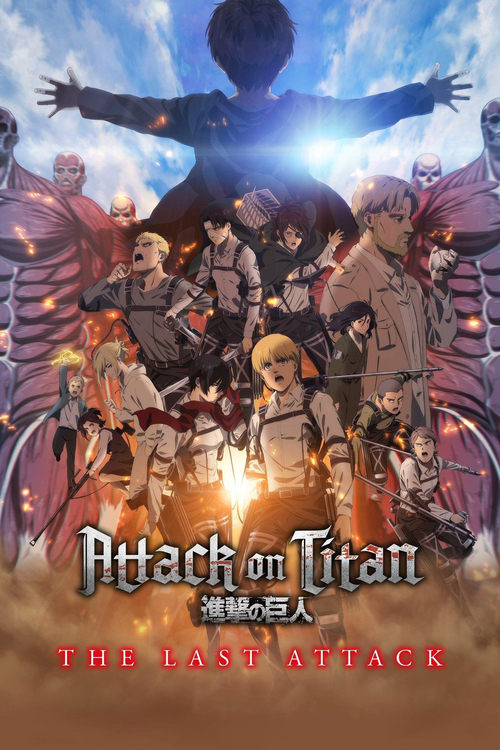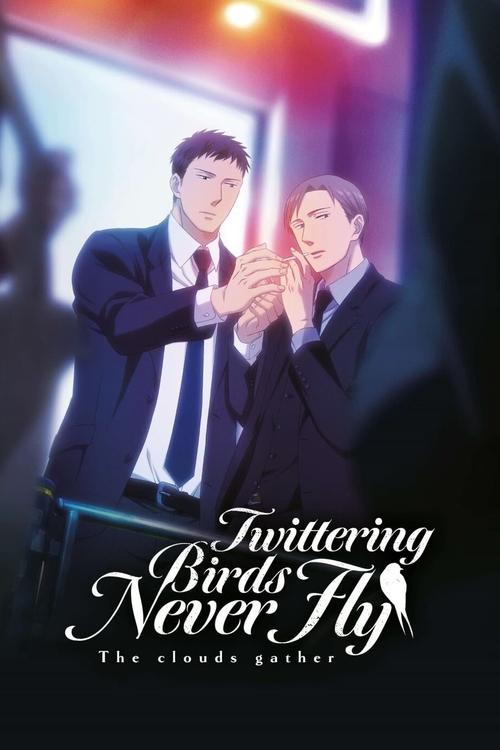
Ask Your Own Question
What is the plot?
The summer sun hangs heavy over Tokyo, its golden light filtering through the leaves of Ginza Park, casting dappled shadows on the pavement. The city hums with the rhythm of daily life, but beneath the surface, something strange stirs. The camera pans upward, revealing the familiar silhouette of Tamori, the storyteller, seated in a dimly lit room, his eyes twinkling with mischief. "Tonight," he says, his voice low and inviting, "we gather four tales of the bizarre--stories that will make you question what is real, what is imagined, and what lies hidden in the corners of the human heart." The screen fades, and the first story begins.
Story 1: "Otodokemono" (オトドケモノ)
The scene shifts to a modern apartment in central Tokyo. Takuya Yamabe, a web designer in his early thirties, sits at his desk, fingers flying over his laptop. The air is thick with the scent of coffee and the faint hum of the refrigerator. His wife, Yukari Yamabe, a nurse, moves through the kitchen, chopping vegetables for dinner. The apartment is neat, lived-in, the kind of place where comfort has settled into routine.
Takuya glances at his phone, which has just buzzed with a notification. He frowns. "What's this?" he mutters, tapping the screen. A sleek, minimalist app appears: Otodokemono. The interface is simple, almost too simple. "Order anything. Delivered instantly." Takuya laughs. "This can't be real… but let's try something small." He orders a bottle of wine. Yukari raises an eyebrow. "You're not seriously going to believe this, are you?"
Seconds later, there's a knock at the door. Takuya opens it, and a woman stands there--tall, elegant, dressed in a black uniform. She hands him a bottle of wine, identical to the one he ordered. "Thank you for using Otodokemono," she says, her voice smooth, almost hypnotic. "We'll be seeing you again." She leaves without another word.
Takuya and Yukari stare at each other, stunned. "That… that was fast," Yukari says. Takuya grins. "Let's try something bigger." Over the next few days, they order more--groceries, clothes, even a rare book Takuya has been searching for. Each time, the delivery woman appears, her smile never faltering, her presence growing more unsettling. The apartment fills with boxes, the air thick with the scent of new things.
But soon, the app begins to demand more. Notifications pop up: "Order something you truly desire." Takuya hesitates, then types in "a new car." The delivery woman arrives that evening, keys in hand. "Your wish is granted," she says. Takuya feels a chill. "How is this possible?" he asks. The woman only smiles. "The app knows what you want. It always does."
Yukari grows uneasy. "Takuya, this isn't right. We're not in control anymore." Takuya shrugs. "It's just a convenience. What's the harm?" But the app's demands grow more insistent. "Order something you fear," it prompts. Takuya types in "a memory I wish I could forget." The delivery woman appears, holding a small box. Inside is a photograph--a moment from Takuya's past, a secret he thought buried. Yukari gasps. "How did they get this?"
The apartment feels like a cage. The boxes pile up, the air thick with the weight of unspoken guilt. Takuya and Yukari argue, their voices rising. "We need to stop this," Yukari says. "Delete the app." Takuya hesitates, then taps the screen. The app vanishes. But the delivery woman appears at the door, her smile gone. "You can't stop now," she says, her voice cold. "The app owns you. It always will." She hands Takuya a new phone. "It will find you again."
The scene fades as Takuya and Yukari sit in silence, staring at their phones, the weight of the app's promise pressing down on them. The apartment, once a sanctuary, now feels like a prison.
Story 2: "Nandakanda Ginza" (何だかんだ銀座)
The camera drifts to Ginza Park, where Yusuke, a curious boy of about ten, walks with his father. The park is lush, the trees swaying in the summer breeze. Yusuke points to a strange figure sitting on a bench--a man dressed in an expensive suit, his eyes distant, his movements slow and deliberate. "Who's that?" Yusuke asks. His father shrugs. "Just some rich guy, probably."
But Yusuke is fascinated. He watches as the man, the Nihon Ookanemochi (Japanese Millionaire), pulls out a gold watch, checks the time, and mutters to himself. Yusuke's father leans in. "Let's keep him. He might be useful." They approach the man, who offers no resistance. They bring him home, setting him up in the living room.
At first, the Nihon Ookanemochi is quiet, almost catatonic. But soon, he begins to speak, demanding luxury items--Ginza chocolates, designer clothes, rare teas. Yusuke's father scrambles to fulfill his requests, the house filling with boxes and bags. Yusuke watches, wide-eyed, as his father becomes obsessed with pleasing the creature.
One evening, the Nihon Ookanemochi demands a specific brand of sake, only available in Ginza. Yusuke's father rushes out, returning hours later, exhausted. "Why do you do this?" Yusuke asks. His father sighs. "Because he's rich. Because he can give us things we've never had." Yusuke frowns. "But he's not happy. He's just… empty."
The tension builds. The Nihon Ookanemochi's demands grow more extravagant, his presence more oppressive. Yusuke's father begins to argue with him, his voice rising. "You're not a person! You're just a symbol of greed!" The Nihon Ookanemochi stares blankly. "I am what you made me."
Yusuke watches, his heart heavy. He realizes the creature is not a source of wealth, but a mirror, reflecting his family's own desires and insecurities. One night, he approaches the Nihon Ookanemochi. "You don't have to stay," he says. The creature looks at him, then nods. Yusuke and his father release him, watching as he walks away, disappearing into the night.
The next morning, Yusuke and his father sit in the park, the air light, the weight of materialism lifted. "We don't need him," Yusuke says. His father smiles. "No. We don't."
Story 3: "Melody ni Nosete" (メロディに乗せて)
The scene shifts to a bustling office, where Kanoumi Murano, a young office worker, sits at her desk, her fingers tapping nervously. The air is thick with the hum of computers and the murmur of colleagues. Suddenly, a melody fills her head--a jarring, discordant tune. Kanoumi freezes, her body moving in time with the music. If she doesn't act in sync, she risks death. This is brain melody syndrome, a rare condition that has plagued her for years.
Kanoumi struggles through the day, her movements jerky, her mind racing. She meets Mitsuru Shindo, a colleague rumored to be eccentric. Mitsuru watches her, his eyes sharp. "I've seen this before," he says. "It's not just in your head." Kanoumi is startled. "You know about this?"
Mitsuru invites her to his apartment, a cluttered space filled with books and strange objects. He shows her a journal, filled with notes on brain melody syndrome. "There's no cure," he says. "But there are ways to manage it." Kanoumi feels a glimmer of hope.
But the melodies grow more intense, more unpredictable. Kanoumi's condition worsens, her body moving in ways she can't control. Mitsuru watches, his expression unreadable. "You're not alone," he says. "I have it too." Kanoumi is stunned. "You… you understand?"
The climax comes when Kanoumi and Mitsuru confront each other, their bodies moving in sync with the music. "We can't cure it," Mitsuru says. "But we can support each other." Kanoumi nods, tears in her eyes. They sit together, listening to music, finding comfort in their shared experience.
Story 4: "Denwa wo Shiteru Furi" (電話をしてるふり)
The camera moves to a crowded train, where Nozomi Kawasaki sits, pretending to be on a phone call. She speaks into her phone, her voice soft, her eyes distant. "Dad, I miss you," she whispers. Nozomi's father died years ago, and she uses the ruse to avoid unwanted attention.
A man, Kazuki, watches her, his eyes narrowing. He approaches, his voice gentle. "You're not really talking to anyone, are you?" Nozomi blushes, embarrassed. "I… I pretend to call my father. It helps me cope."
Kazuki sits beside her. "I lost someone too," he says. "My mother." Nozomi looks at him, surprised. "You understand?" Kazuki nods. "Grief is strange. It finds its own way."
They move to a park bench, the air quiet, the trees swaying in the breeze. Nozomi takes out her phone, pretending to call her father. Kazuki watches, his expression thoughtful. Suddenly, the phone rings. Nozomi answers, her voice trembling. "Dad?" Kazuki listens, stunned. Nozomi's father's voice comes through, faint but clear. "I'm here," he says. Kazuki realizes Nozomi is genuinely connected to her father, her grief a bridge between worlds.
The scene ends with Nozomi and Kazuki sitting on the bench, finding solace in each other's company, the weight of loss lifted, if only for a moment.
Final Scene
The screen fades to black, then returns to Tamori, the storyteller. He smiles, his eyes twinkling. "In the end," he says, "the most bizarre things are not the creatures or the apps, but the mysteries of the human heart." The camera pulls back, revealing the city at night, its lights twinkling like stars. The screen fades to black, leaving the audience to reflect on the stories and their meanings.
No deaths occur in any of the stories. The confrontations are emotional and psychological, revealing the characters' deepest fears and desires. The endings are bittersweet, offering no easy answers, but a sense of connection and understanding. The film concludes with Tamori's closing monologue, a reminder that the true mystery lies within us all.
More Movies Like This
Browse All Movies →What is the ending?
In the ending of "Tales of the Bizarre: 2022 Summer Special," the characters confront the consequences of their actions throughout the film. The climax reveals the true nature of their intertwined fates, leading to a resolution that leaves them changed forever. Each character faces a pivotal moment that defines their future, with some finding redemption while others succumb to their darker impulses.
As the film draws to a close, the atmosphere is thick with tension. The characters gather in a dimly lit room, shadows dancing on the walls as they confront the choices they have made. The air is heavy with regret and anticipation. One character, who has been a source of conflict, stands at the center, their face a mask of determination and fear. They reveal a hidden truth that has been the catalyst for much of the chaos, prompting gasps from the others.
In a series of flashbacks, the audience is shown the pivotal moments that led to this confrontation. Each character's backstory unfolds, revealing their motivations and the emotional scars that drive them. The tension escalates as accusations fly, and the room becomes a battleground of words. The character at the center, feeling the weight of their actions, begins to break down, tears streaming down their face as they plead for understanding.
As the confrontation reaches its peak, a sudden event--a loud crash from outside--interrupts the moment. The characters rush to the window, where they witness a shocking scene that forces them to reevaluate their priorities. This moment of external chaos serves as a catalyst for internal change. They realize that their petty grievances pale in comparison to the larger world outside.
In the aftermath, the characters begin to reconcile. One character, who had been particularly antagonistic, extends an olive branch, offering a heartfelt apology. The others, initially hesitant, begin to respond in kind, leading to a powerful moment of unity. They embrace, tears of relief and forgiveness mingling as they acknowledge their shared humanity.
The film concludes with a montage of each character's journey moving forward. One character, once consumed by anger, finds solace in helping others, volunteering in their community. Another, who had been lost in self-doubt, takes a bold step towards pursuing their dreams. The final scene shows the group together, laughing and sharing stories, a stark contrast to the tension that once defined their relationships.
In this ending, the film emphasizes themes of redemption, the power of forgiveness, and the importance of community. Each character's fate reflects their growth and the lessons learned through their experiences, leaving the audience with a sense of hope and the belief that change is possible.
Is there a post-credit scene?
In "Tales of the Bizarre: 2022 Summer Special," there is indeed a post-credit scene that adds an intriguing twist to the overall narrative.
As the credits roll, the screen fades to black before transitioning to a dimly lit room filled with various oddities and artifacts. The camera slowly pans across the room, revealing a collection of strange objects, each with its own story. The atmosphere is thick with mystery, and a low, eerie hum fills the air.
Suddenly, a figure emerges from the shadows--a mysterious curator, dressed in a vintage suit, with an enigmatic smile. He begins to speak directly to the audience, inviting them to ponder the nature of the bizarre tales they have just witnessed. His voice is smooth yet unsettling, hinting at a deeper connection to the stories told throughout the special.
As he gestures toward a peculiar artifact--a small, intricately carved box--the camera zooms in on it. The curator explains that this box holds the key to a new tale, one that intertwines with the stories already shared. He cryptically mentions that the box has the power to reveal hidden truths and that those who dare to open it may find themselves entangled in a new adventure.
The scene ends with the curator chuckling softly, his eyes glinting with mischief, as the screen fades to black once more. This post-credit moment leaves viewers with a sense of anticipation and curiosity, suggesting that the bizarre tales are far from over and that more mysteries await in the future.
What are the main story arcs featured in the Tales of the Bizarre: 2022 Summer Special?
The Tales of the Bizarre: 2022 Summer Special features several distinct story arcs, each exploring different bizarre scenarios. One arc follows a group of friends who discover a cursed artifact that brings their darkest secrets to light, leading to tension and betrayal among them. Another story centers on a woman who receives mysterious letters from her future self, prompting her to make life-altering decisions. A third arc involves a man who becomes obsessed with a strange phenomenon occurring in his town, leading him to uncover a hidden truth that changes his perception of reality.
How does the character of the cursed artifact affect the group of friends?
The cursed artifact serves as a catalyst for the group's unraveling friendships. Initially, they are drawn to its allure, but as they begin to experience the artifact's effects, their hidden insecurities and past grievances surface. Each character reacts differently; one becomes paranoid, another increasingly aggressive, while a third tries to mediate but ultimately feels powerless. The emotional tension escalates, leading to confrontations that reveal their true natures and the fragility of their bonds.
What motivates the woman receiving letters from her future self?
The woman is initially motivated by curiosity and a desire to improve her life after feeling stagnant and unfulfilled. As she reads the letters, which contain both warnings and advice, her motivations shift towards fear and desperation. She grapples with the moral implications of altering her fate and the potential consequences of her actions. This internal conflict drives her to make increasingly risky choices, reflecting her struggle between embracing change and fearing the unknown.
What is the significance of the strange phenomenon in the town?
The strange phenomenon in the town symbolizes the hidden fears and unresolved issues of its residents. As the man investigates, he discovers that the phenomenon is linked to the collective trauma of the community, manifesting in bizarre occurrences that reflect their emotional states. His obsession with uncovering the truth leads him to confront his own past, ultimately revealing how interconnected their lives are and how they must face their fears to find resolution.
How do the characters' relationships evolve throughout the special?
Throughout the special, the characters' relationships undergo significant transformations. The initial camaraderie among the friends deteriorates as the cursed artifact amplifies their insecurities, leading to betrayal and mistrust. In the arc involving the woman and her future self, her relationships with family and friends become strained as she prioritizes her quest for self-improvement over their needs. The man investigating the phenomenon initially feels isolated but ultimately finds solidarity with others who share his experiences, fostering a sense of community as they confront their fears together.
Is this family friendly?
"Tales of the Bizarre: 2022 Summer Special" is an anthology film that features a collection of short stories, each with its own unique themes and tones. While the film is designed to entertain a wide audience, there are several elements that may be considered objectionable or upsetting for children or sensitive viewers.
-
Dark Themes: Some stories explore themes of loss, betrayal, and existential dread, which may be too intense for younger audiences.
-
Violence: Certain segments may contain scenes of violence or implied harm, which could be distressing.
-
Supernatural Elements: The presence of supernatural occurrences and eerie atmospheres may be frightening for children.
-
Mature Situations: Some narratives may touch on adult themes or situations that are not suitable for younger viewers.
-
Emotional Distress: Characters may experience significant emotional turmoil, which could resonate deeply with sensitive viewers.
Overall, while the film may have engaging storytelling and artistic visuals, parents should consider these aspects when determining its suitability for children or sensitive individuals.





